Formula 1 is known for ending lives too early, as 32 F1 drivers lost their lives since 1950 during the racing weekends, and 20 more during testing and non-championship races.
The emphasis on driver’s safety was not a big concern in the first decades of racing, but only in the 80s serious steps have been taken in order to improve the safety of the drivers and viewers. Most of these tragic deaths could have been prevented, but some of them were impossible to predict and avoid.
Here are the 8 best drivers who have died on the race weekends.
8. Lorenzo Bandini – 42 races, 8 podiums, 1 win
7. Luigi Musso – 25 races, 7 podiums, 1 win,
6. François Cevert – 48 races, 13 podiums, 1 win
5. Peter Collins – 35 races, 9 podiums, 3 wins
4. Gilles Villeneuve – 68 races, 13 podiums, 6 wins, 2 pole positions
3. Ronnie Peterson – 123 races, 26 podiums, 10 wins, 14 pole positions
2. Jochen Rindt – 62 races, 13 podiums, 6 wins, 10 pole positions, 1 championship
1. Ayrton Senna – 162 races, 80 podiums, 41 wins, 65 pole positions, 3 championships
8. Lorenzo Bandini – 42 races, 8 podiums, 1 win
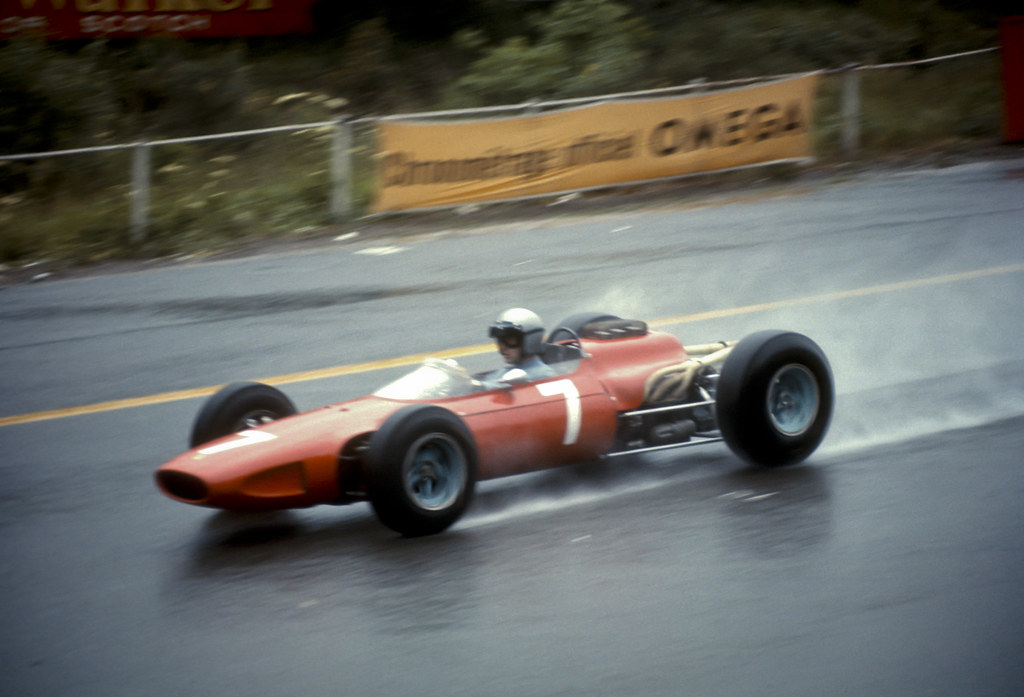
The Italian driver started his F1 career in 1961, when he joined Scuderia Centro Sud (do not mistake with Scuderia Ferrari). A team which entered a total of 49 races with the cars of Maserati, BRM, Cooper and Ferrari. Already in his second season, he scored a stunning 3rd place during a Monaco Grand Prix, despite starting from 10th on the grid. For his second podium, Bandini had to wait until the 1964 German Grand Prix, where he finished on the lowest step of the podium. Only 3 weeks later, during the next round he took victory in Austrian Grand Prix, and added two more podium finishes in Italy and Mexico. With 23 points to his name, he finished 4th in the Championship, which was his career-high.
In 1966, Lorenzo Bandini helped with the creation of a “Grand Prix” a famous drama movie about Formula 1, which won 3 Oscars. It was Bandini’s idea for the crash happening in the movie, during Monaco Grand Prix, to take place in the harbour chicane. Bitterly, this was the exact spot in which Bandini crashed during the 1967 Monaco Grand Prix. His car hit the straw bales and exploded. His unconscious body was dragged away from the car by the marshals moments before the second explosion happened. Bandini was hospitalized with over half of his body covered in third degree burns and other injuries. Sadly, three days after the accident, he passed away.
7. Luigi Musso – 25 races, 7 podiums, 1 win,
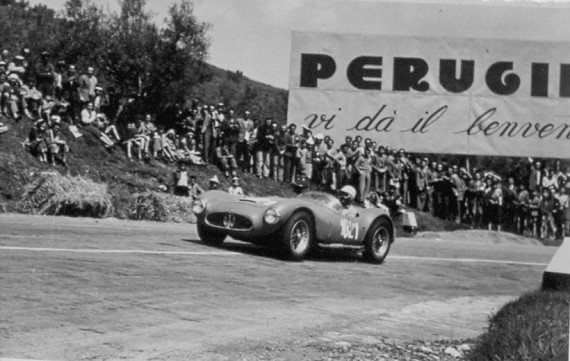
Luigi Musso raced only in 25 races and scored 7 podiums including 1 victory. Musso’s first race took place in 1953, but it was also the only race he participated in that year. In 1954, he participated in 2 races, and only in 1955 Musso’s career took off, when he participated in 6 races, and secured 3rd place finish in the Dutch Grand Prix. In 1956, Luigi joined Juan Manuel Fangio in Ferrari, and started the season strong by winning the first Grand Prix in Argentina. Truth to be told, Musso didn’t cross the finish line as the first driver, neither as a second one. He didn’t cross the finish line at all. His only victory is thanks to Fangio, whose car broke down early in the race. After driving ⅓ of the race distance, Musso was in 5th, and upon arriving in the pit-lane, his car was given to Fangio, who managed to win the race throughout the remaining 68 laps. As a result, they both shared the 1st place, and split the 8 points for victory between them.
6. Francois Cevert – 48 races, 13 podiums, 1 win
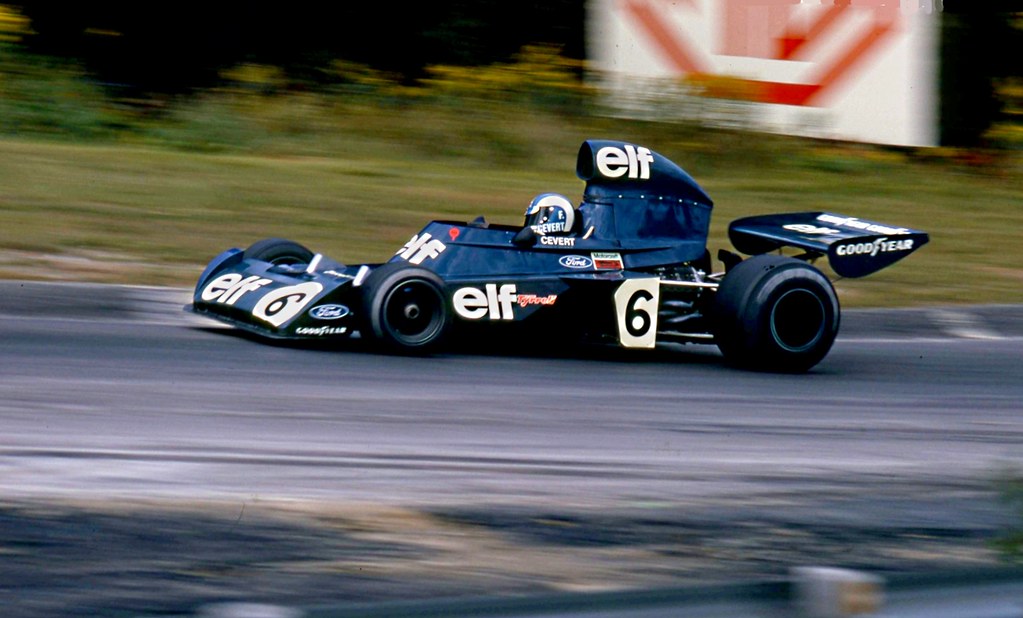
The Frenchman raced in only four Formula 1 seasons, and if not the tragic accident in 1973, he would be one of the favourites to fight for the Championship in the next year. His teammate, Jackie Stewart was a strong first driver, and the Tyrell was set up for the British driver. Nonetheless, Cevert was a great teammate, who never disobeyed team orders and contributed to the fight for the Constructors Championship as well. Their biggest rival was the Lotus team, with Emerson Fittipaldi and Ronnie Peterson.
Cevert stood on the podium 13 times. He won one race, took the lowest podium position twice and had an astounding number of 10 second-place finishes. Additionally, in the 1972 Le Mans, he came 2nd as well. Francois died during the last round of the season at the Watkins Glen international circuit. In one of the training sessions, he hit the curb too fast, and lost control of the car, crashing into the barriers. Jackie Stewart did a personal investigation and found out that Cevert drove into the corner in a fourth gear, which allowed for greater speed, but left much less error margin. His aggressive style of driving, even in a training, describes the determination and ambition of one of the biggest “what ifs” in the Formula 1 history.
5. Peter Collins, 35 races, 9 podiums, 3 wins
Peter Collins was one of the biggest young talents in the Formula 1 history. He started his racing career extremely young for the time. While drivers such as Louis Chiron and Luigi Fagioli raced while well into their 50s, Peter Collins achieved his first success in the 1949 Silverstone 100-mile race while being only 18. His first F1 race was the 1952 Swiss Grand Prix, but the first full season came only in 1956. In addition to the Formula 1, Peter Collins won the 24h Le Mans race, 12h of Sebring and came second in the prestigious Mille Miglia race.
Peter Collins died in 1958, during a race on the Nurburgring. He was chasing Tony Brooks and approached a corner too quickly, running wide. He lost control of the car, drove into a ditch, and the car flipped, throwing Collins out of the car (seatbelts were introduced only 14 years later.). Mike Hawthorn, Peter’s teammate, was so shocked by this accident that he finished his career at the end of the season, the moment he was crowned the champion.
4. Gilles Villeneuve – 68 races, 13 podiums, 6 wins, 2 pole positions

Gilles Villeneuve was one of the most spectacular and beloved drivers in Formula One history. Discovered and introduced to F1 by James Hunt, Villeneuve made his debut with McLaren in 1977 at the British Grand Prix. Although he impressed in his first outing in an F1 car, McLaren chose Patrick Tambay over him for the race seat. But Enzo Ferrari saw Villeneuve’s talent and signed him at the end of 1977 to replace the departing Niki Lauda. Villeneuve was a complete opposite of the champion from Austria. Lauda always calculated the risk and knew when to take the foot from the gas pedal, while Villeneuve always raced as if it was to decide the Championship. His commitment to attacking every corner was revered by fans but criticized by some as excessive risk-taking. In just his third F1 race at Fuji in 1977, he collided with Ronnie Peterson and flew off the track, tragically killing two spectators. But he also pulled off audacious moves like banging wheels with Rene Arnoux at Dijon in 1979 while disputing second place, a duel that went down as one of F1’s greatest battles.
The 1980 and 1981 seasons did not yield any championships as Ferrari struggled with reliability and performance. But Villeneuve still produced moments of brilliance. In 1981 he took a popular home win at Monaco, followed by a stunning 4-car dice for victory at Jarama. Sadly, that Spanish Grand Prix proved to be his last win. Two weeks later at Zolder circuit, Villeneuve was trying to beat Pironi’s time from earlier qualifying. As he approached a March being driven by Jochen Mass, Villeneuve moved right to overtake just as Mass also veered right. The two cars touched wheels and Villeneuve was launched into the air at 140mph, suffering fatal injuries as his car nose-dived into the ground and disintegrated.
3. Ronnie Peterson – 123 races, 26 podiums, 10 wins, 14 pole positions
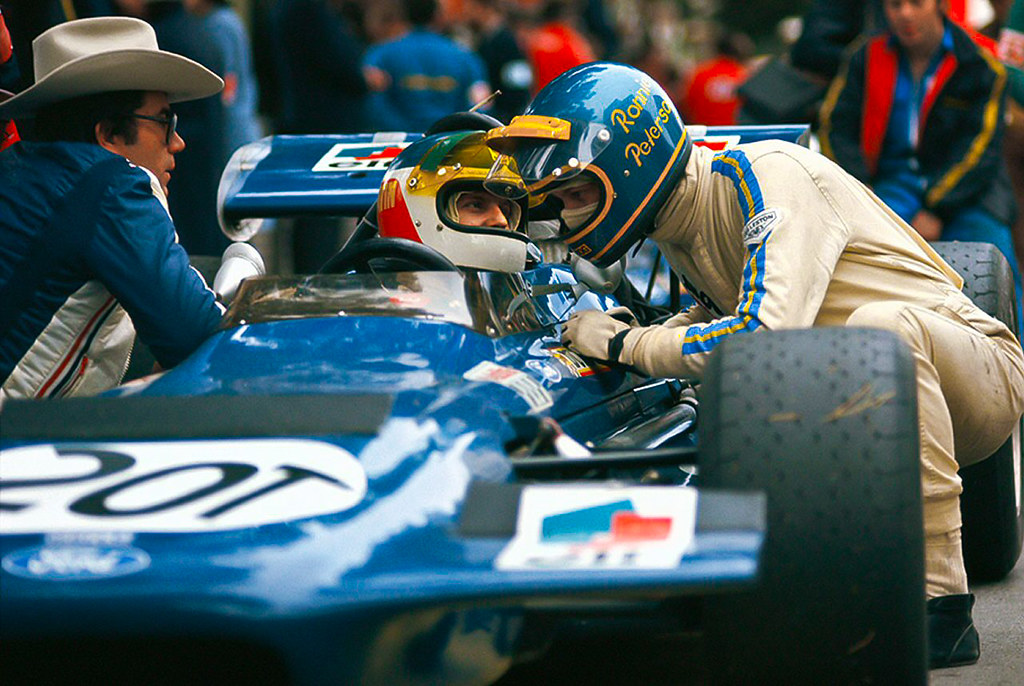
Ronnie Peterson was called SuperSwede, as he was the best Swedish F1 driver in history and scored 10 out of 12 wins for his nation. Racing across 9 seasons, Peterson was a runner up twice, and took third place in the Championship once. Most of the career Peterson raced in Lotus and Tyrell, but he struggled with huge reliability issues and bad luck across the whole career. Out of 123 races he started in, he retired from 49 of them. In the 1977 season, driving a Tyrell, Peterson did not finish 10 out of 17 races, a result which would not be acceptable even in the worst of the teams in the current F1 era.
Ronnie’s Peterson’s life ended tragically, in a huge car pileup at Monza, during the third to last races of the season. The whole accident could have been prevented, if the race procedures were kept. When the drivers from the further rows were still lining up for start, the race direction lid the green light, which started the race. As a result, those who were in the back, had a rolling start advantage, which bunched up the whole field on the first straight. The faster drivers from the back caused chaos, as Ricardo Patrese turned to Hunt’s racing line, and the McLaren driver hit Ronnie Peterson, while trying to avoid a crash. As the crash happened on the main straight, it collected a total of 10 cars, but the SuperSwede suffered the most. He was transported to the hospital with 27 fractures in his bones. Ronnie Peterson died the following morning. He finished second in the Championship posthumously, and his teammate, Marco Andretti won the Championship.
2. Jochen Rindt – 62 races, 13 podiums, 6 wins, 10 pole positions, 1 championship
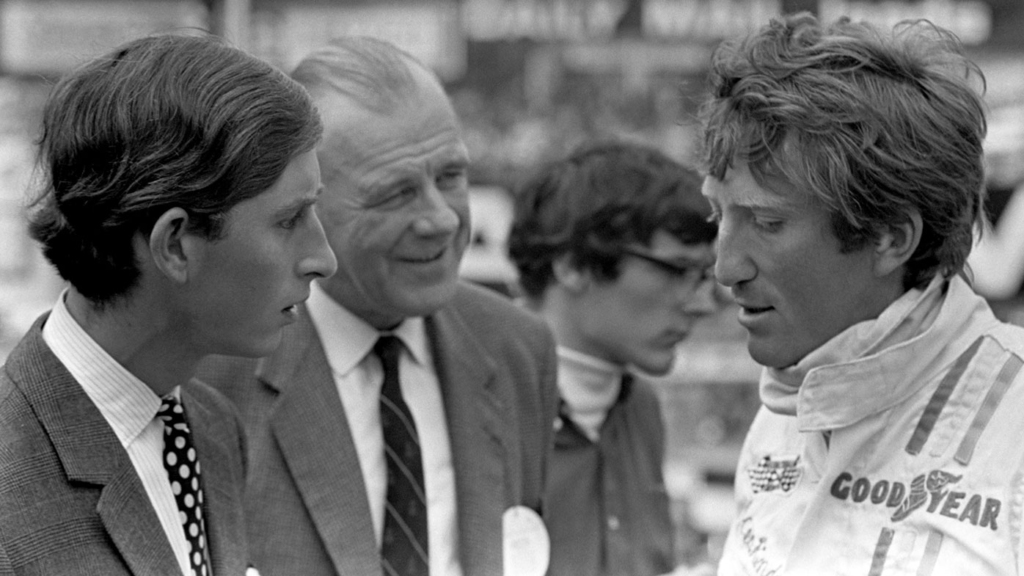
Jochen Rindt is the only driver in Formula 1 history to become the Champion posthumously, and one of the fastest drivers in history. While only in his second full season, in 1966, he took the 3rd place in Championship, scoring three podiums. Rindt’s biggest issue was finishing the races. Despite having an amazing pace both in qualifying and in the race pace, he didn’t finish 35 out of 62 races he participated in, which is over 50% of his starts. Out of the 27 races which he did finish, he stood on the podium in 13 of them, and won 6.
Jochen Rindt drove for Cooper in his early years, then for a year for Brabham, and for the last two seasons, he switched to Lotus. In his final year in Formula 1, Rindt was unstoppable. Finally having a reliable car, and his great driving skills, allowed him to win the Monaco Grand Prix for the first time in his career. In the second half of the season, he took 4 consecutive wins, and had a big points advantage while heading to the Italian Grand Prix at Monza. In the practice session, Rindt wanted to break for the Parabolica corner, but due to failure of his breaks, his car turned directly into a guardrail. Jochen was pronounced dead in the ambulance, before even reaching the hospital. Despite missing the remaining 4 races of the season, his advantage was big enough to secure him the Championship title posthumously.
1. Ayrton Senna – 162 races, 80 podiums, 41 wins, 65 pole positions, 3 Championships

Senna made his Formula 1 debut in 1984 with the small Toleman team. Despite driving an underpowered car, he managed to score three podium finishes and made headlines with an incredible wet weather drive at Monaco where he finished second after starting 13th. His outstanding performances earned him a contract with Lotus for 1985.
At Lotus, Senna’s qualifying prowess and wet weather skills became apparent. He took seven pole positions in 1985 and scored his first Grand Prix win in torrential rain at Estoril in Portugal. Over the next two seasons with Lotus, he cemented himself as the fastest qualifier in F1, but often struggled in races due to Lotus’ unreliable cars.
Senna’s move to McLaren in 1988 paired him up with fellow superstar Alain Prost and provided him with a car to showcase his brilliance. In his first season with McLaren, Senna won 8 races and narrowly beat teammate Prost to win his first Drivers’ Championship. The two titans of F1 would dominate the next two seasons, engaging in an intense rivalry both on and off the track.
In 1989, their fractious relationship came to a head when the two McLarens collided at Suzuka while battling for the lead, effectively handing Prost the championship. The following year saw more controversy as Senna intentionally crashed into Prost’s Ferrari at Suzuka to seal his second world title.
After winning his third championship in 1991, Senna found himself in slower McLaren and Williams cars over the next few seasons as technology changed in F1. He continued to work his qualifying magic, scoring epic wins against the odds at Donington in 1993 and Adelaide in 1993. His move to Williams in 1994 was expected to provide him with a competitive car once more.
The 1994 San Marino Grand Prix marked one of the darkest weekends in F1 history. Roland Ratzenbeger died during the Saturday qualifying, and Senna crashed out of the race at high speed on Sunday, suffering fatal head injuries. An investigation concluded that a failure in the car’s steering column likely caused him to leave the track at almost 192 mph. His shocking death at the age of 34 rocked the motorsports world and devastated his home country of Brazil.
In Brazil, Senna reached a legendary, almost godlike status. He was a symbol of pride and hope for many Brazilians. Following his shocking death, three million people lined the streets of São Paulo for his funeral. Undeniably for Brazil, despite his flaws and controversies, Senna remains their greatest sporting icon.

